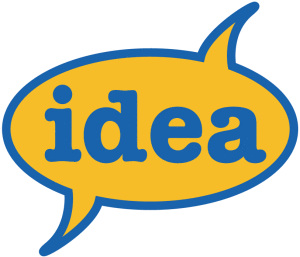Creativity is a concept that’s tricky to pin down. While it may be somewhat difficult to define, yet we know it when we see it. Is it an innate biological trait or something we can pick up as we go? How can we nurture creativity in ourselves and in others? Let’s explore.
Steve Jobs once said, “Creativity is just connecting things.” Creative people can take large amounts of information and synthesize them by making the right connections. In this age of the internet and information overload, this ability is essential to success. Creative people observe the world around them and make important connections.
Mihaly Csikszentmihalyi wrote a book in 1996 called “Creativity: The Work and Lives of 91 Eminent People” (a synopsis can be found in the Psychology Today article linked below). Csikszentmihalyi said that creative people are complex and may contain contradictory extremes. For example, here are 10 traits he came up with. Creative people:
- Have a lot of energy, but are often quiet and at rest.
- Can be smart but naïve.
- Can be simultaneously playful and disciplined.
- Can be both imaginative and realistic.
- Are often both extroverted and introverted at the same time.
- May be proud yet humble.
- May not conform to gender role stereotypes.
- Are passionate yet objective about their work.
- Experience both pain and enjoyment due to their sensitivity.
These contradictions may explain why many people just don’t “get” creative types. At best, creative people can seem confusing and at worst, hypocritical.
Yet creativity is a critical component of innovation and success in almost every line of work. Traditional business leaders may inadvertently hinder their employees’ creativity by being overly controlling, demanding productivity at all costs, and not allowing their workers the time and space to be creative. Creativity exists outside of the physical world and can’t really be measured (yet).
Daydreaming has also been linked to creativity. Among other rewards, constructive daydreaming has positive creative outcomes like creative incubation, improvisation and evaluation, future planning, simulating the perspective of another person, and evaluating the implications of self and others’ emotional reactions (Kaufman, 2013, see link below).
Maya Angelou said, “You can’t use up creativity. The more you use it, the more you have.” We often let our own fear and self-doubts creep in and tell ourselves that we aren’t creative. But if you look at most children, you can see that creativity and playfulness are innate human qualities. Maybe we can nurture these, rather than beating them out of ourselves in the name of efficiency.
An article by Dr. David G. Javitch on Entrepreneur.com discusses some ways to boost creativity among your employees. Javitch says to investigate why your employees aren’t creative in the first place. Take a look at the work environment. Help yourself and others think more positively to combat attitudes that hinder creativity. Encourage innovative ideas and risk-taking. Give positive feedback and create an environment that is motivating and inspiring. This takes some honest reflection and hard work, but will be worth it. These same tips can perhaps be applied to your colleagues, friends, and family. After all, the more creative people out there, the more creative solutions we can create together.
John Bradley Jackson
Author, Entrepreneur, Professor
© Copyright 2014
All rights reserved
Sources:
http://www.psychologytoday.

